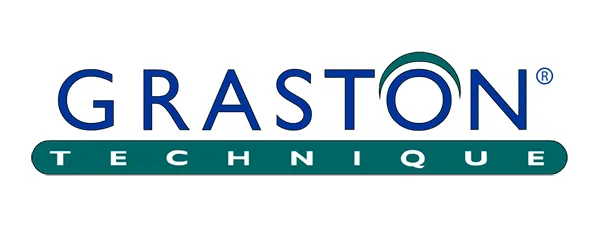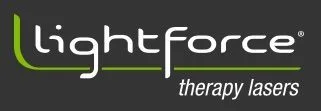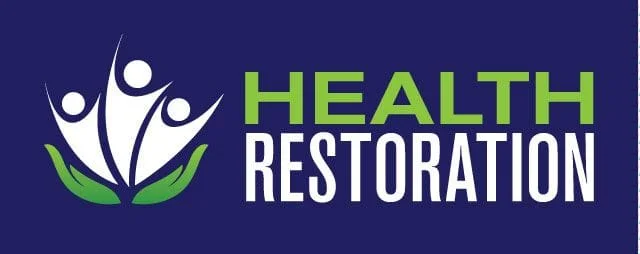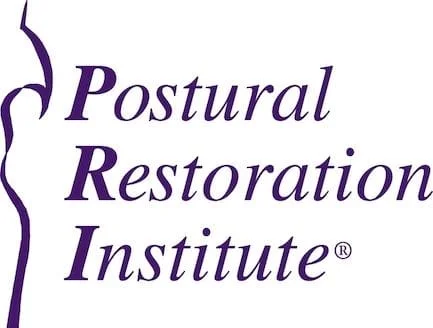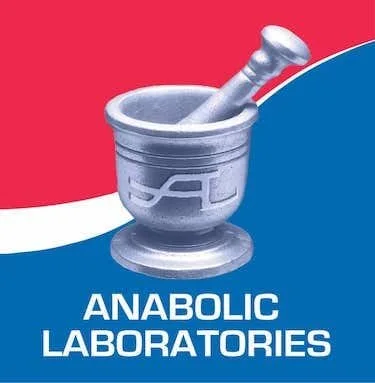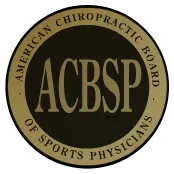by K.D. Christensen DC, CCSP, DACRB
By virtue of its deep-socketed bony anatomy, the hip is a very stable joint. The intrinsic stability of the hip joint is further enhanced by a very thick joint capsule reinforced by strong spiral ligaments, and several powerful groups of muscles. [1] It is injured much less commonly than joints such as the shoulder, knee, and ankle; [2] however, since hip problems can be very disabling, it is vital to have a treatment and rehabilitation program which can return patients to full function. Simple daily activities such as walking down stairs, getting to the bathroom, and even turning in bed can be difficult for a patient with a hip problem. Athletes, both the highly competitive and the recreational, can be put out of commission by pain in or around the hip joint. This is because the hip forms a vital link in the lower extremity kinetic chain — transferring ground-reaction forces from the legs to the trunk during gait. While some hip problems are due to trauma, many conditions are secondary to overuse or misuse. Osteoarthritis of the hip joint is often an end-result, following years of improper biomechanics and dysfunction.
Most hip problems seen by doctors of Chiropractic have developed gradually, over a period of weeks, months, or even years. Common examples include: trochanteric bursitis, recurrent muscle strains (hamstrings, adductors), piriformis syndrome, snapping hip, and chronic degenerative changes (hip joint DJD). A successful and appropriate exercise program for the hip does not require expensive, joint-specific equipment. In fact, the low-tech approach can be very effective for the treatment of most hip conditions. With an understanding of normal hip joint function, knowledge of the involved muscles, and simple home exercise equipment, doctors of Chiropractic can readily help their patients with hip complaints.
How to Rehab the Hip
Stretching and passive motion. For some hip problems, improving the flexibility of short and tight muscles is necessary. Muscle imbalance inhibits normal joint function and limits the functional range of motion. Frequent, gentle and sustained stretching of specific muscle groups should be demonstrated to the patient, who can usually start the stretching immediately, even in the early stages after an injury. Slow, passive movements of the joint should also be initiated soon after an injury, in order to prevent the formation of adhesions. If an injury is very acute (with muscle swelling), an initial period of relative rest with cryotherapy may be needed. During this period, though, exercise of the opposite leg should be encouraged. Vigorous exercise of the contralateral leg muscles produces a neurological stimulus in the injured muscles (called the “cross-over effect”), which helps to prevent atrophy. [3] This is most easily done by “single-leg cycling” on a stationary bike or water exercise using the non-injured leg.
Piriformis syndrome and trochanteric bursitis are the two hip conditions which benefit from specific stretching exercises. In both of these, tight muscles contribute to an overuse condition which irritates sensitive tissues. Piriformis syndrome develops when a tight piriformis muscle inflames the sciatic nerve, causing posterior hip aching along with paresthesiae down the back of the leg, in the sciatic distribution. Since the piriformis is an external rotator of the hip, treatment must include inward rotation stretches for the piriformis muscle. Complete Chiropractic care will also encompass corrections of subluxations and biomechanical faults of the pelvis, as well as predisposing factors — such as an anatomically short leg and/or foot pronation. [4] Trochanteric bursitis causes pain at the lateral aspect of the hip, where a shortened iliotibial band crosses over the greater trochanter, irritating the protective bursa. Localized pain in this area, along with a positive Ober’s test, indicates the need for stretches to lengthen this long segment of connective tissue. Again, correction of abnormal biomechanics, such as leg length discrepancies, must be part of the treatment [5], and foot orthotics may be needed. [6]
Isotonic resistance exercise. Weaker or injured muscles can be quickly strengthened with the use of isotonic resistance exercises. The resistance can come from a machine, from weights, from elastic tubing, or just using the weight of the body. Since the hip functions as part of a closed kinetic chain during most daily and sports activities, weight-bearing exercises which require the co-contraction of accessory and stabilizing muscles can be most effective. Open-chain exercising (done with the foot and lower leg freely moving) are most helpful in the early stages of hip rehab, to reduce the stress on the surrounding muscles.
Open chain exercising can be started very early with a symptomatic hip, since it doesn’t require the musculoskeletal structures to bear the weight of the body. The easiest method is to extend the entire leg against the resistance of elastic tubing. This can also be accomplished with the knee bent and in a sitting or recumbent position with the tubing attached around the thigh. Initial exercising should be done with a limited amount of movement — within a “pain-free” range of motion. These exercises are particularly useful for patients who have an injured muscle, or a chronic muscle imbalance, which can develop into a “snapping hip” syndrome. Surprisingly, strengthening of the muscle and tendon involved in a “snapping” hip (such as the tensor fascia lata, iliopsoas, or biceps femoris muscles) is reported as more useful than stretching for resolving the snapping. [7] Rehab for degenerative arthritis of the hip should also start with open chain exercising, since the joint is more safely exercised when the damaged cartilage is not bearing weight directly. As the patient progresses, additional resistance can safely be supplied with heavier tubing.
Weight-bearing strengthening exercises, with the foot on the floor, should be included when an athlete is preparing to return to sports activities. Examples of closed chain exercises include partial squats, lunges (forward, back, and to the side), and step-ups or stair-climbing. Initially, body weight will be sufficient. Resistance can be gradually and progressively increased with the use of hand weights or a weight bar. A closed chain exercise which is available at many gyms is the leg press machine; however, this machine does not re-train the co-contraction of accessory hip support muscles as fully as weight-bearing exercises do.
Proprioception and coordination. It is important for athletes (whether recreational or competitive), to regain the fine neurological control necessary for accurate hip and lower extremity movements. Stimuli from articular and muscle mechanoreceptors must be modulated with efferent responses to maintain “dynamic joint stability.” [8] This means that some time (five to ten minutes each day) should be spent exercising while standing on one leg, with the eyes closed, while standing on a mini-tramp, or using a rocker board. The advantage of these balance exercises is seen when patients return to sports activities and can perform at high levels without consciously having to protect their hip or leg. Rocker board exercises are especially necessary for injuries, but can also help patients who have degenerative arthritis of the hip to gain improved function.
Plyometric exercise. Advanced exercises designed to develop explosive power and eccentric responses of the hip muscles are needed to re-establish the rapid responses necessary for good performance in many sports. Building strength during the eccentric (lengthening) phase of contraction and overloading the stretch response with plyometric exercises are often the missing component in recurrent hip muscle strains. Plyometric exercises include jumping with rapid returns, “bounding” style of running, and dropping off a box and quickly jumping up as high as possible. These types of exercises are part of the final phase of rehab for all athletes who hope to return to full function after a hip injury. Sedentary patients and those who do not need to develop this level of specialized muscle contractions usually do not need to progress into this part of hip rehab.
Functional alignment. Many of the chronic and overuse hip problems seen by doctors of Chiropractic develop secondary to an imbalance in weight-bearing alignment of the lower extremities. Alignment problems will need to be addressed in order to resolve the patient’s current symptoms and to prevent hip arthritis. Leg length discrepancies and foot pronation problems are frequently found in association with trochanteric bursitis, iliotibial band syndrome, and piriformis syndrome. Studies have found that osteoarthritis is much more common in the hip joint of a longer leg. [9] Recurrent muscle strains, especially hamstring and groin pulls, often occur secondary to an asymmetry in structural alignment. The use of custom-fitted orthotics and/or heel lifts is frequently a necessary part of a comprehensive hip rehab program.
Shock absorption. Asymmetrical loss of joint space is evidence of degenerative change at the joint surfaces and erosion of cartilage. In addition to proper nutrient support, additional dispersion of ground reaction forces will be necessary by providing shock-absorbing insoles. Many recreational athletes can avoid developing hip problems when they are fitted with orthotics which support the feet and ankles, and limit the forces on the hip joints. Shock absorbing orthotic supports provide almost immediate symptom relief for many patients with chronic, degenerative hip symptoms.
Conclusion
An appropriate and progressive rehab program should be started early in the treatment of patients with hip complaints and sports injuries. [10] Several rehab techniques are available, none of which require expensive equipment or great time commitments. Selecting the best exercise approach for each patient’s hip problem is not difficult. A closely monitored home exercise program allows the doctor of Chiropractic to provide cost-efficient, yet very effective rehabilitation care.
Since biomechanical alignment problems are frequently found in association with chronic hip complaints, patients must be screened for excessive pronation and/or leg length discrepancies. Failure to recognize these complicating factors will result in patients with recurring hip complaints, or symptoms that vary in location due to the effects of the underlying biomechanical stress. When the lower extremities are properly aligned, the muscles are strengthened and lengthened, and the hip joints work smoothly, patients will be able to enjoy the benefits of independent mobility well into their elder years.
References
1. Hertling D, Kessler RM. Management of Common Musculoskeletal Disorders (2nd ed.). Philadelphia: JB Lippincott, 1990:280.
2. Geraci MC. Rehabilitation of the hip, pelvis, and thigh. In: Kibler WB, ed. Functional Rehabilitation of Sports and Musculoskeletal Injuries. Gaithersburg, MD: Aspen Publishers, 1998:216.
3. Hertling D, Kessler RM. Management of Common Musculoskeletal Disorders (2nd ed.). Philadelphia: JB Lippincott, 1990:334.
4. Souza TA. Differential Diagnosis for the Chiropractor: Protocols and Algorithms. Gaithersburg: Aspen Publishers, 1998:134.
5. Souza TA. Differential Diagnosis for the Chiropractor: Protocols and Algorithms. Gaithersburg: Aspen Publishers, 1998:263.
6. Subotnick SI. Sports Medicine of the Lower Extremity. New York: Churchill Livingstone 1989:312.
7. Souza TA. Differential Diagnosis for the Chiropractor: Protocols and Algorithms. Gaithersburg: Aspen Publishers, 1998:265.
8. Laskowski ER, Newcomer-Aney K, Smith J. Refining rehabilitation with proprioception training. Phys Sports Med 1997; 25:89-102.
9. Friberg O. Clinical symptoms and biomechanics of lumbar spine and hip joint in leg length inequality. Spine 1983; 8:643-645.
10. Heiser JR. Rehabilitation of lower extremity athletic injuries. Contemp Podiat Phys 1992; Aug:20-27.
Related posts:
- Rebalancing Hip Muscles
- Hip Extension and Abduction Dysfunction
- Flexibility Training and Rehabilitation
- Rehabilitation of Running Injuries














